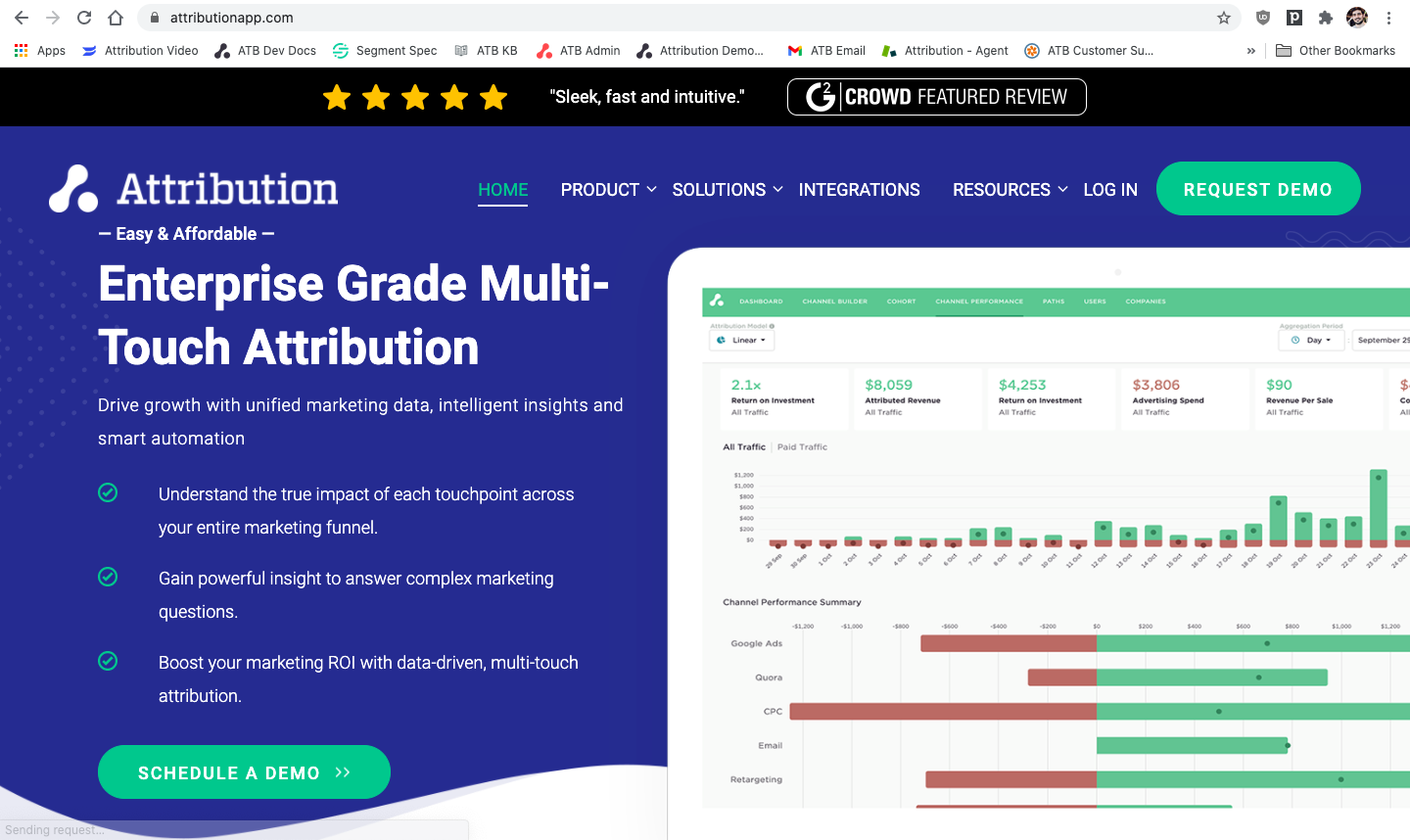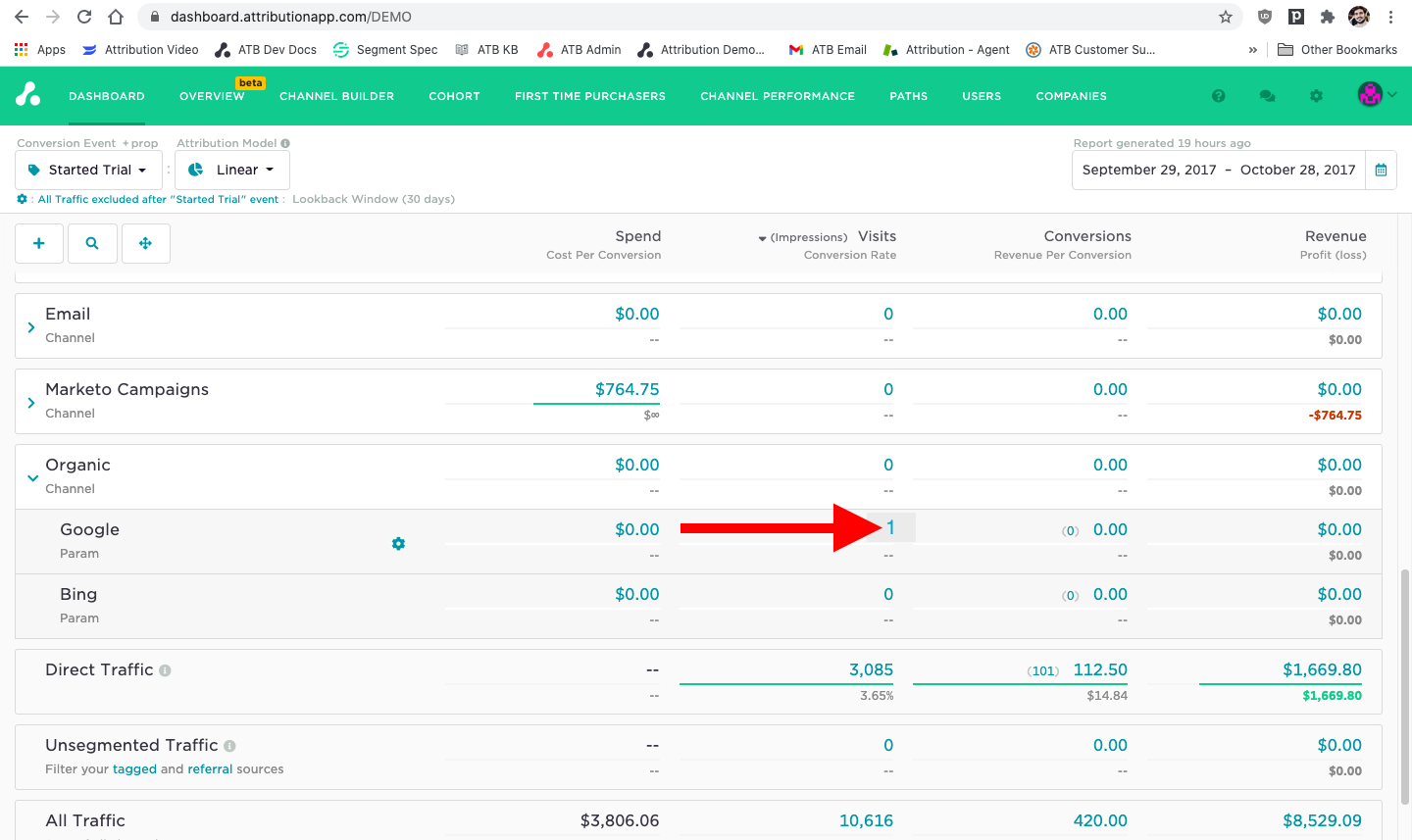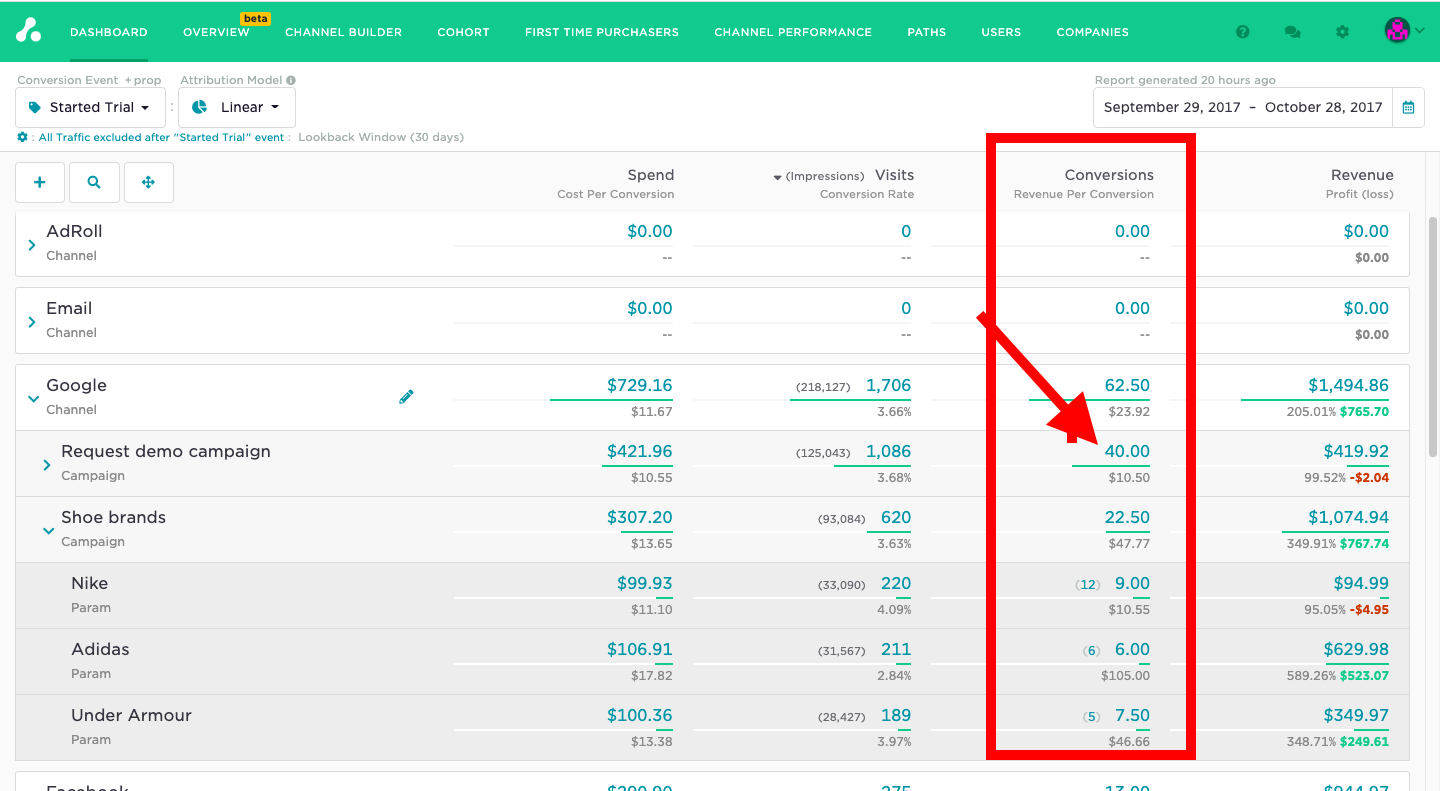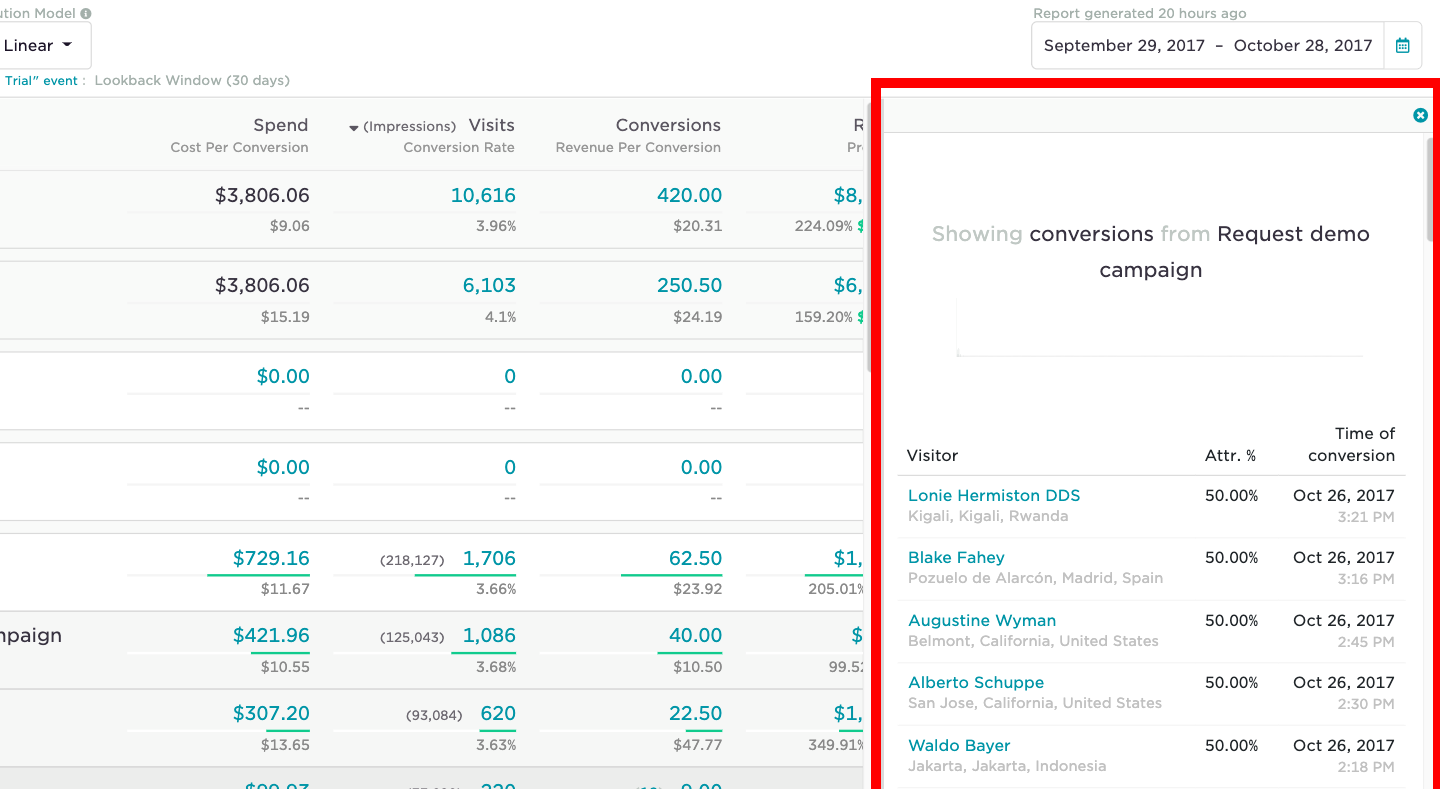A visit to conversion example
See how Attribution collects information and builds your model
The return on ad spend formula
Return on ad spend can be broken down to ROAS, where R = revenue, and S = spend. Below we will show how Attribution gives credit to specific ad touches, derives spend, and introduces revenue to your model.
Here we will follow a visitor from ad click to the 'register demo' conversion event with the goal of demonstrating how each piece of the Attribution tracking apparatus & model interact to derive return on ad spend for your model.
Recording the first visit (Google Organic example)
In this example you can imagine I am a potential Attribution app customer browsing Google. I search for Attribution app and click on the first non-ad link.

I would then arrive to the page below and record a visit on the dashboard. You can learn more about how visits are recorded here.

When the visit is recorded, Attribution will capture the referring domain and destination URL. In this case, the referring domain would be https://www.google.com and the destination URL would be https://www.attributionapp.com/. Attribution will use these URL domains to provide credit for specific ads and channels
Since this is a visit where the referring domain captured is "https://google.com" and the destination captured does not have any utm parameters, this visit would then fall into the Google Organic channel. Let's see below what happens when one of our paid ads are clicked.

How Attribution ties paid ad clicks to visits: Adding spend
Attribution uses two methods for providing credit to specific paid ads.
- Attribution will look for a unique parameter in the destination URL of the visit I.e. 'gclid' or 'fbaid'
- Attribution automatically add a unique parameter to your ads, then later look for that unique parameter in the destination URL of visitors. I.e. 'fbaid' or 'liaid'
For example, with Attribution's Google Ads integration Attribution will automatically look for specific 'gclid' parameters in the destination URL of visitors to filter Google paid ad clicks properly. You can learn more about this here.
In contrast, with Facebook Ads, Attribution will automatically add a unique 'fbaid' parameter to your ads. Attribution will then look for these parameters in the destination URL of visits to filter by. You can learn more about this here.
A paid ad example to conversion: Adding revenue
In this example you can again imagine I am a potential Attribution app customer browsing Google. However, this time I click on a paid google ad with a unique 'gclid' parameter

In this scenario my destination URL would include a 'gclid' parameter that then would tie back to a specific Google Ad you are running and Attribution is looking to filter for.

This would then appear as a visit on your dashboard in your Google channel associated with the specific campaign's filter, in this case 'request demo campaign.'
If the visitor then submitted a demo request form this would register a 'registered demo' conversion event and assuming there are no other visits for this visitor, the 'request demo campaign' filter would get credit for this conversion.


You can drill down further into each of these conversions.
In conclusion (a basic example)
To close, this is a fairly basic example of the path to conversion. In reality there are often multiple ad touches, model types, and settings to consider. Attribution will collect all this data and model it out depending on your adjustments in a real world multi-touch environment even in scenarios where you could have had 100s of ad touches prior to a conversion.
If you have any questions on this please feel free to contact [email protected]
Updated less than a minute ago
